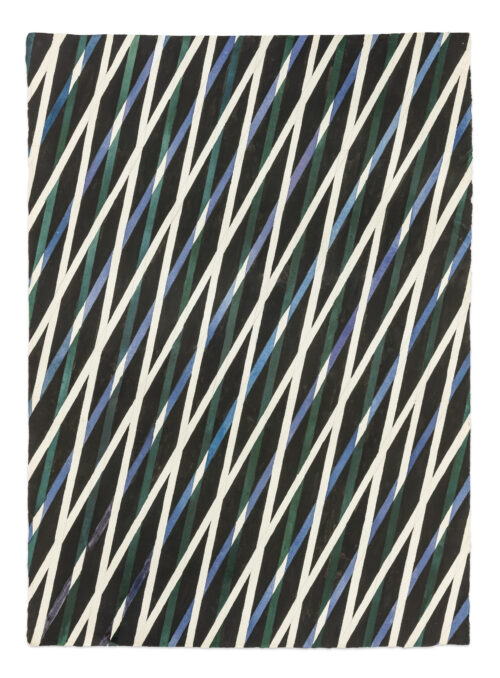Soviet pavilion at Expo 67, Montreal
The Soviet pavilion at Expo 67 was designed by Mikhail Posokhin, Ashot Mndoyants, and Boris Tkhor. The use of large glass and aluminium walls with a ski jump roof created a modern and dynamic effect. This impression was further emphasized by an escalator leading up to the pavilion. The exhibits told the story of earth, sea and sky, and what the Soviet people had done to benefit from these elements.
Among the prominent Soviet designers and artists involved in preparing the exhibition was Viacheslav Koleichuk (1941–2018), who was at the time experimenting with kinetic art and ‘tensegrity’ constructions. These self-sustaining and easily modified structures offered the potential for widespread use in future societies. In his designs for the outdoor areas in Montreal, he contrasted heavy and rigid geometric modules with the dynamic cable-stayed system supporting them. His compositions were marked overall by a clear rhythm, a deliberate structuralism, and an impression of weightlessness. Koleichuk argued that museum displays were defined not so much by the objects they presented as by the unique qualities of the exhibition environment itself.
Anna Andreeva (1917–2008) was a renowned Soviet textile artist and designer. From the 1940s to the 80s, she worked as a leading artist in the experimental workshop at the ‘Red Rose’ Rosa Luxemburg Silk Factory in Moscow. It was there that she designed several of the textile print patterns (including Cubes, Olympics, City Grid, Soviet Sports, and Soviet Cosmos) that became mass-produced icons of the Soviet textile industry and also came up with numerous original designs for the USSR’s cultural diplomacy. For example, her designs were used for commemorative silk scarves given as gifts to foreign leaders and celebrities (such as Elizabeth II, Sophia Loren, Federico Fellini, and many others) and for events like the Fifth World Congress of Women (Moscow 1963).
Due to the nature of her professional field—textile design—Andreeva enjoyed a certain level of creative freedom, something that was generally denied artists in the Soviet Union. Her designs were inspired not only by the geometric experiments of the Soviet avant-garde, but also by folk culture and the scientific advances of the day, particularly in the field of cybernetics. Her vibrant geometric patterns were selected to represent the Soviet Union’s textile industry at Expo 67 in Montreal, as well as at Expo 70 in Tokyo.
Countries: Soviet Union
Tags: Architecture, Material, Media


